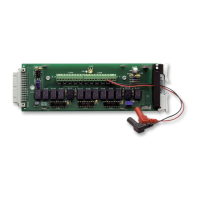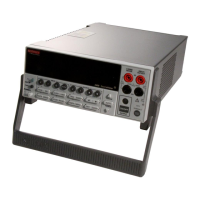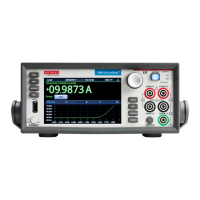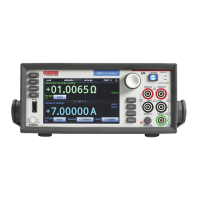Interactive SourceMeter® Instrument Reference Manual Section 6:
2450-901-01 Rev. B/September 2013 6-45
[:SENSe[1]]:<function>:AVERage:TCONtrol
This command set the type of averaging filter that is used for measurements for the selected function when the
measurement filter is enabled.
Type Affected by Where saved Default value
Instrument reset
Power cycle
Measure configuration list
Measure configuration list
Usage
[:SENSe[1]]:<function>:AVERage:TCONtrol <type>
[:SENSe[1]]:<function>:AVERage:TCONtrol?
The measurement function to which this setting applies:
• Current: CURRent[:DC]
• Resistance: RESistance
•
The filter type to use when filtering is enabled; set to one of the following values:
• Repeating filter: REPeat
•
Details
This command selects the type of averaging filter: repeating average or moving average.
When the repeating average filter is selected, a set of measurements are made, which are stored in a
measurement stack and averaged together to produce the averaged sample. Once the averaged sample is
produced, the stack is flushed and the next set of data is used to produce the next averaged sample. This type of
filter is the slowest, since the stack has to be completely filled before an averaged sample can be produced.
When the moving average filter is selected, the measurements are added to the stack continuously on a first-in,
first-out basis. As each measurement is made, the oldest measurement is removed from the stack. A new
averaged sample is produced using the new measurement and the data that is now in the stack.
Note that when the moving average filter is first selected, the stack is empty. When the first measurement is
made, it is copied into all the stack locations to fill the stack. A true average is not produced until the stack is
filled with new measurements. The size of the stack is determined by the filter count setting.
The repeating average filter produces slower results, but produces more stable results than the moving average
filter. For either method, the greater the number of measurements that are averaged, the slower the averaged
sample rate, but the lower the noise error. Trade-offs between speed and noise are normally required to tailor the
instrumentation to your measurement application.
If you send this command without the <function> parameter, it sets the filter type for all functions.
Example 1
CURR:AVER:TCON MOV
Set the averaging filter type to moving average,
with a filter count of 10.
Enable the averaging filter.
Example 2
RES:AVER:TCON MOV
Set the averaging filter type to moving average,
with a filter count of 10.
Enable the averaging filter.
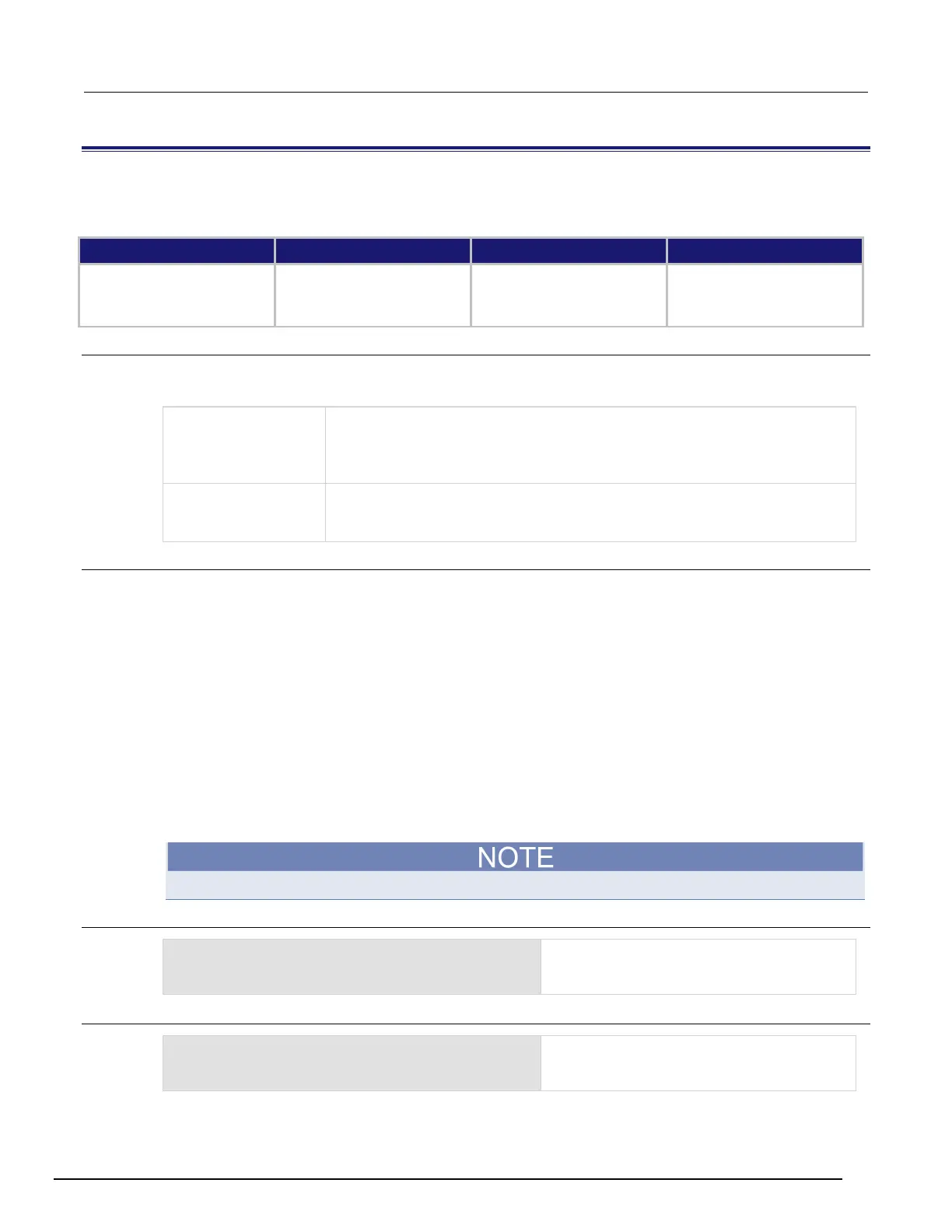